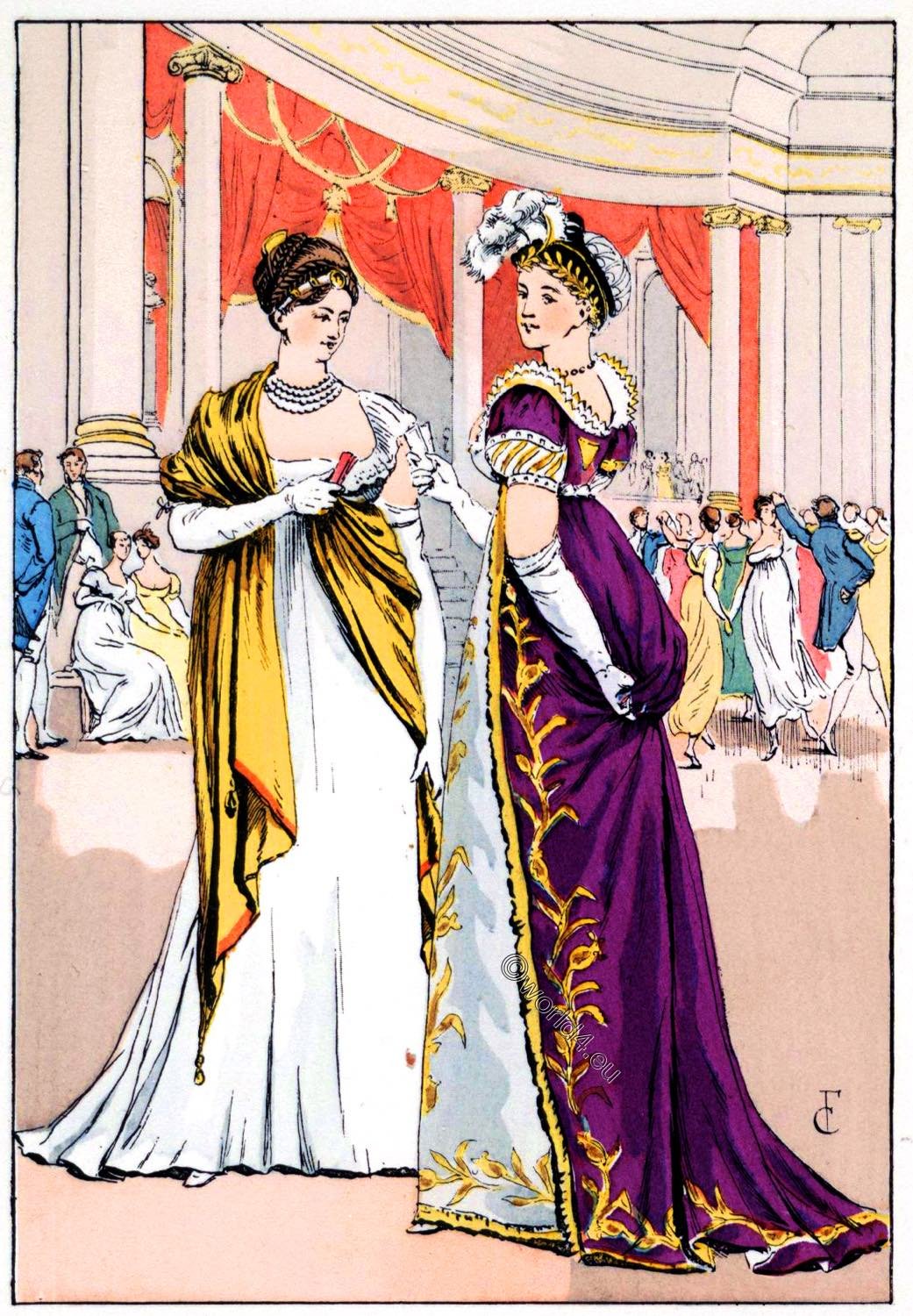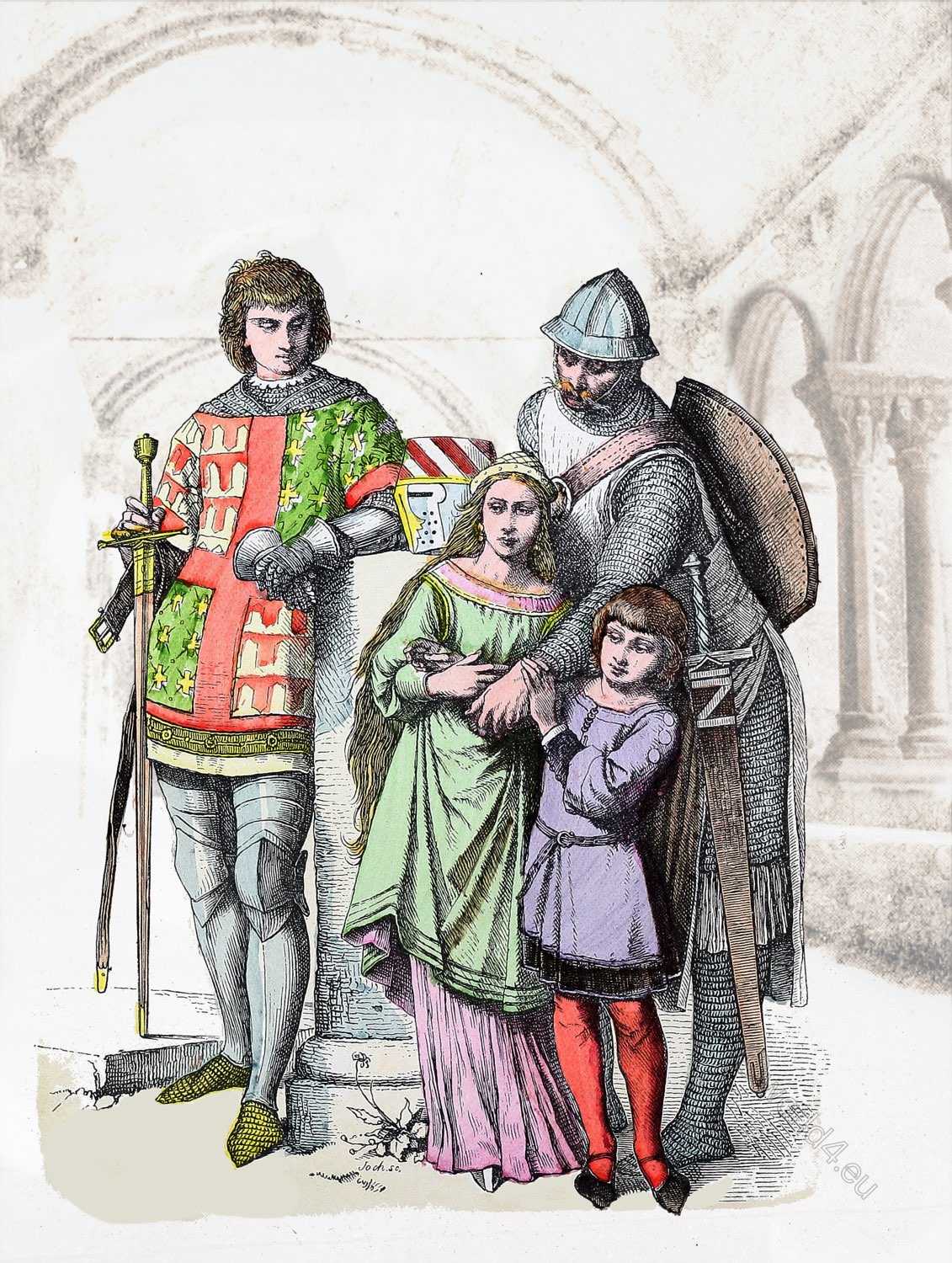
FASHION SILHOUETTES OF THE NINETEENTH CENTURY.
The First Empire (1804-1814), Restoration (1814-1830), Romantic period (1830-1848), Second Empire (1852-1870).
The chemise dress also empire dress, regency or chemise, was a long women’s dress made of thin, transparent fabric, usually muslin, common throughout Europe during the Directoire and Empire. It was cut like a tunic and usually gathered under the bust with a ribbon or belt and otherwise fell freely without a waist. The chemise dress was the most visible form of fashion à la grecque. Because of the translucent fabric, this style was also derisively and pejoratively called “nude fashion”.



The early part of the nineteenth century saw the classic type of costume developed into the one which was characteristic of the First Empire (1804-1814), when the skirts were still straight, with a little fullness, the sleeves long, and close-fitting, or very short and puffed, and the waist more abbreviated than before. The materials of the Empire period were heavily embroidered, spangled, and fringed, reflecting in texture, design and colour the influence of the Orient on the French at that time.
But this simplicity of silhouette was not destined to be more fortunate than its predecessors in remaining the favourite of whimsical fashion, for during the period of the Restoration (1814-1830), a decided change in costume occurred. The waistline, due to the return of the corset about 1809, was gradually lowered, until by 1822 it was in its normal position, its size and straightness of line being emphasised by a tight belt.
In order to balance the gradually increasing width of the bottom of the skirt, a width accentuated by over-abundant decorations, the sleeves were full at the top with much trimming. This passion for trimming extended to the hats which were wide in brim, high in crown, and profusely bedecked with flowers and ribbons. The hair was worn high at the back and gathered into bunches of curls at each side of the forehead.
The general silhouette of the Romantic period (1830-1848), was similar to that of the Restoration, the drooping shoulder line being its chief characteristic. The hair arrangement was simpler, the hair being drawn back from the face into a roll; curls about the face showing beneath the close-fitting bonnet were quite generally worn.
By the time of the Second Empire (1852-1870), the skirts had increased in width to such an extent that they remind one of the skirts of the sixteenth century. Crinolines and starched petticoats were worn, and usually flounces or some other form of crosswise decoration were applied to the voluminous skirts. The close-fitting bodice with its long shoulder remained, but the sleeves became tight at top, transferring their fullness to below the elbow. Bonnets and small hats of infinite variety of shapes were the modish head covering of the day.
In the year 1870, the crinoline and full skirts finally succumbed to popular opposition, and were succeeded by the bustle and narrow Chinese skirt, which was worn over it.
By 1875 the skirts were so tight at the knees that great inconvenience was experienced in walking. The bodice, cut with a peplum below the waist line, was still close-fitting, and quite generally buttoned to the neck with a standing collar, the sleeves remaining fairly tight until about 1896, when the leg o’mutton sleeve reappeared to balance the increasing width of the long skirt.
The fabrics of this century show as great a variety as do the silhouettes, which they so greatly affected. The embroidered silks and other fabrics of the First Empire gave way in the time of the Restoration to fine cottons and light materials which took from the heavy appearance of the voluminous dresses, while in the Second Empire tulle, organdie, crepe, muslin, together with other light fabrics were as much in demand as the rich and costly silks manufactured at Lyons. Serge, cashmere, alpaca, and mohair won popular favour later in the century.
QUESTIONS
- Analyse carefully the silhouettes of this century, from the point of view of: Balance, relation to the natural lines of the body, ease and comfort in wearing.
- Collect family photographs of the time of the Civil War, and make free hand sketches of the silhouettes of the costumes.
- Trace the sources of inspiration for the nineteenth century costume silhouettes.













